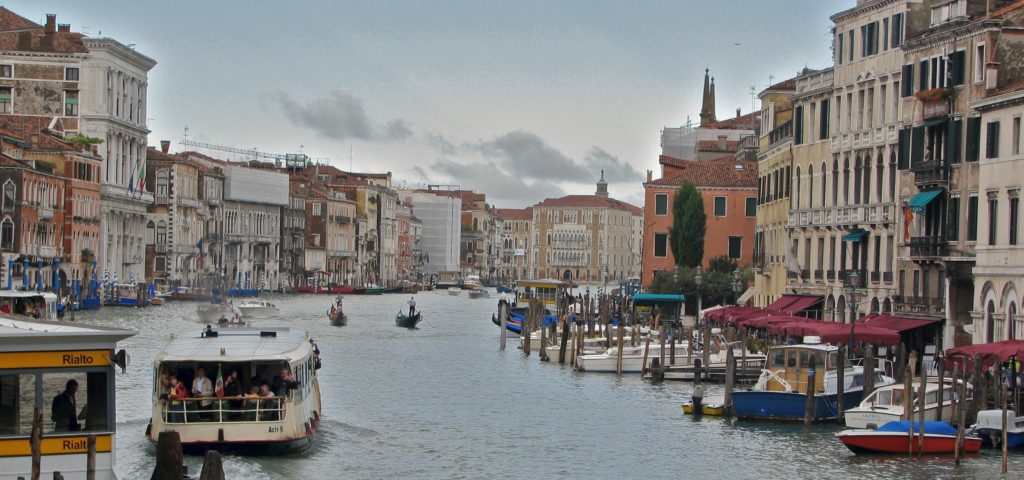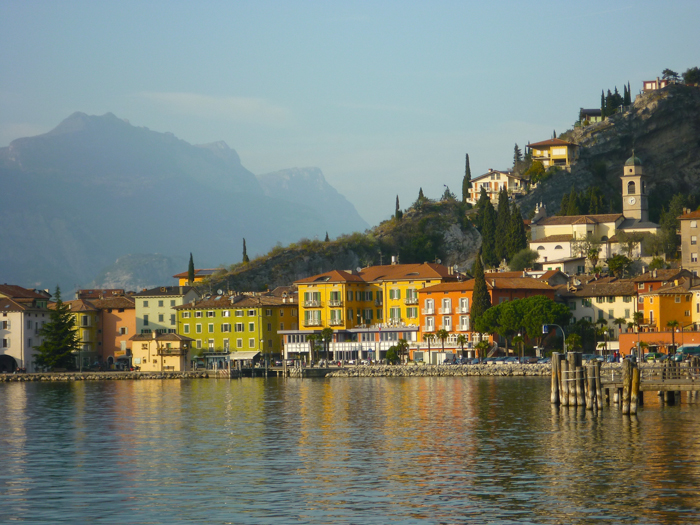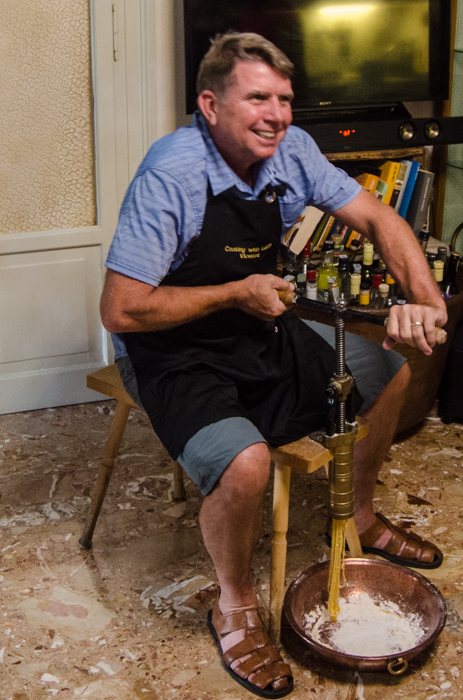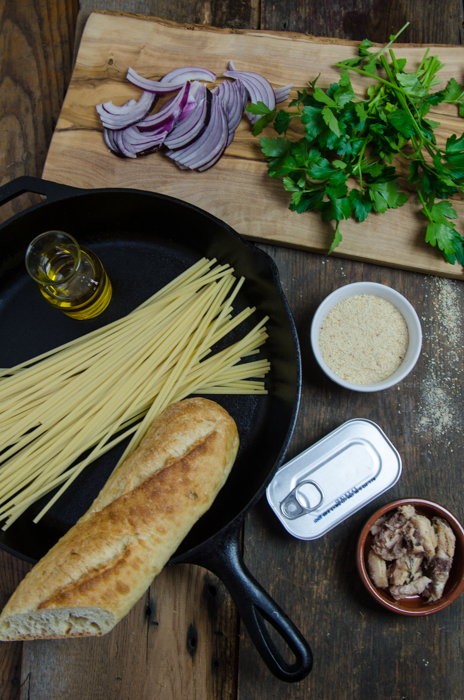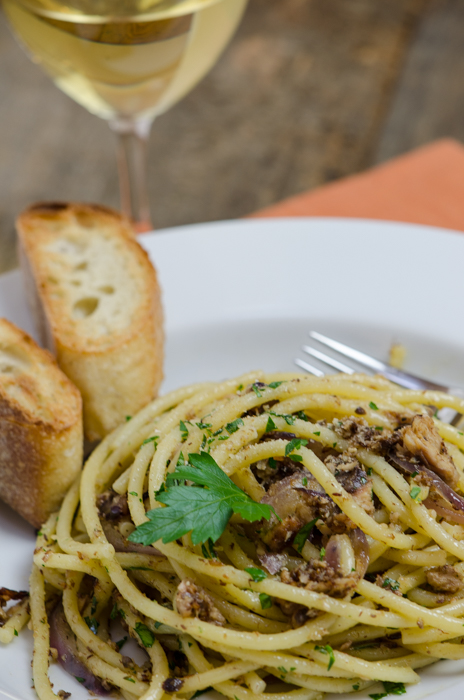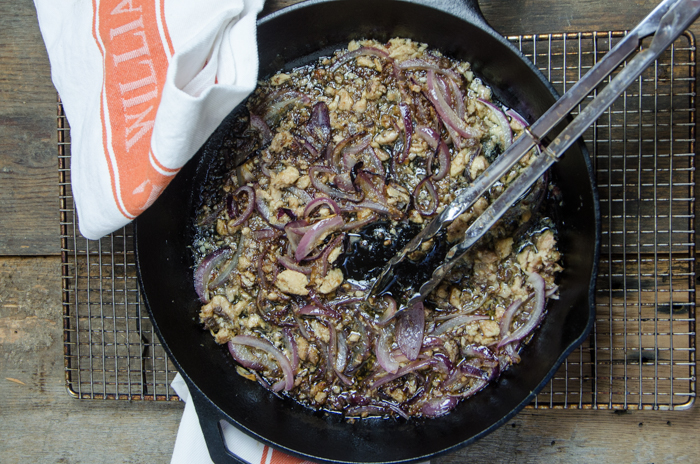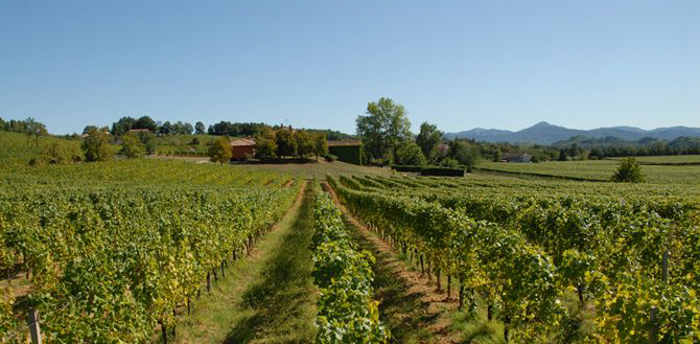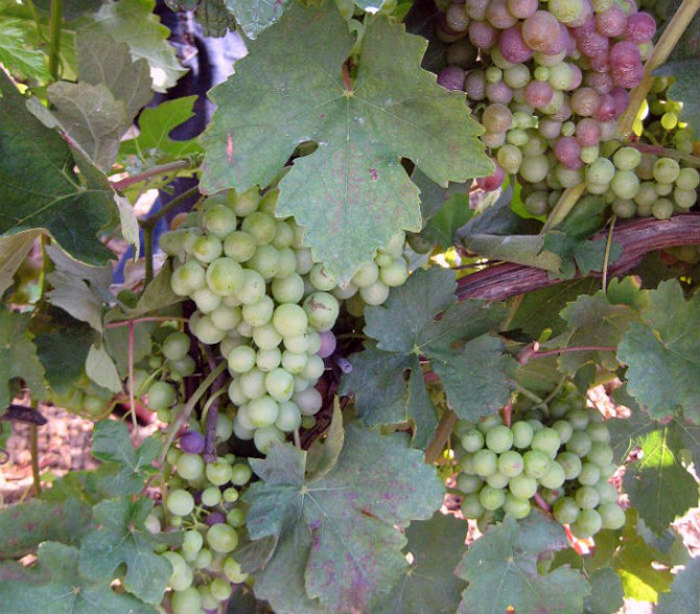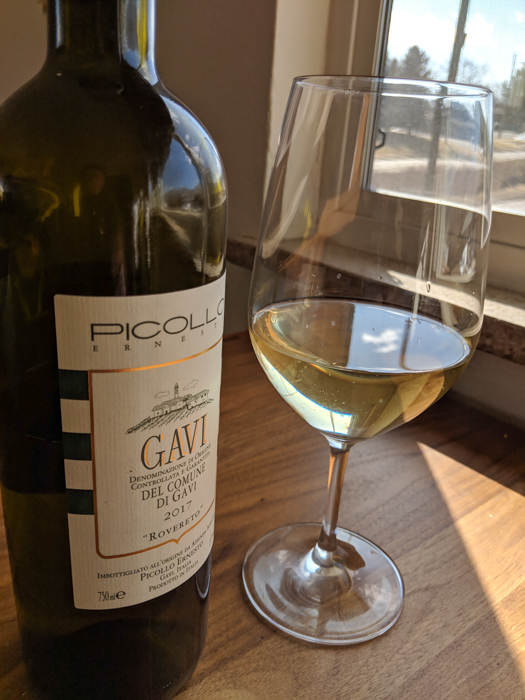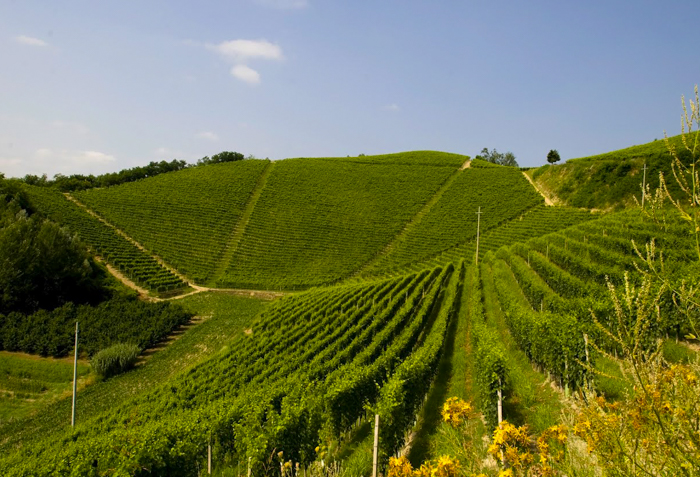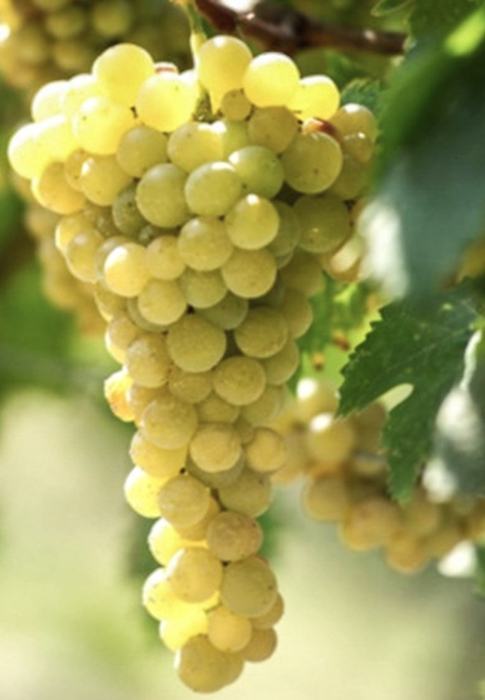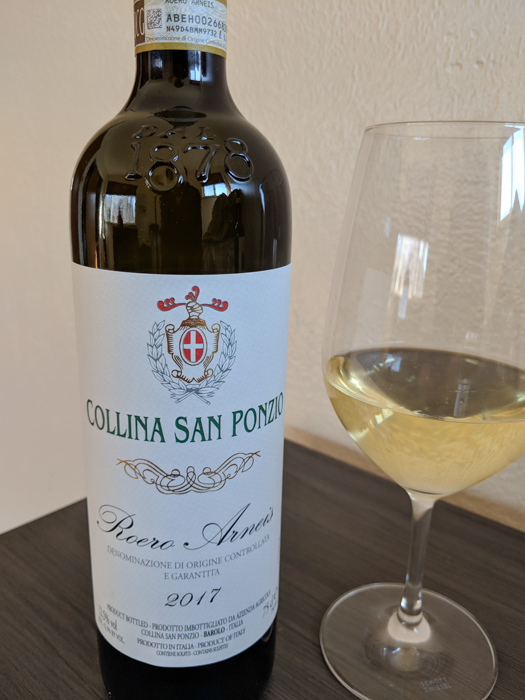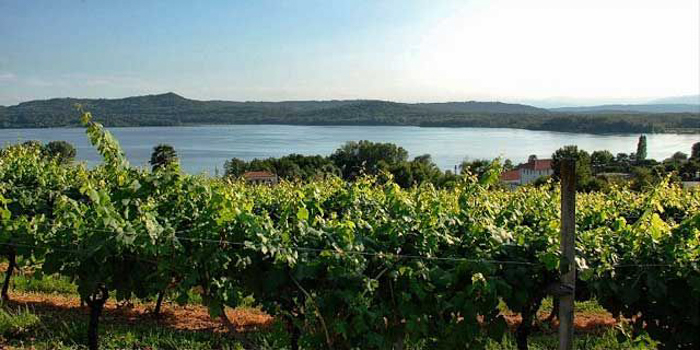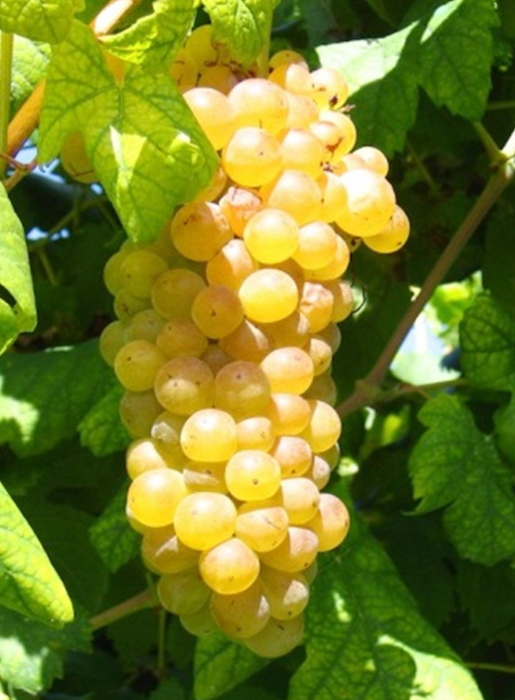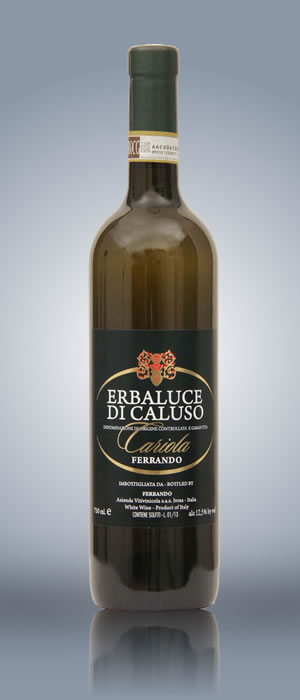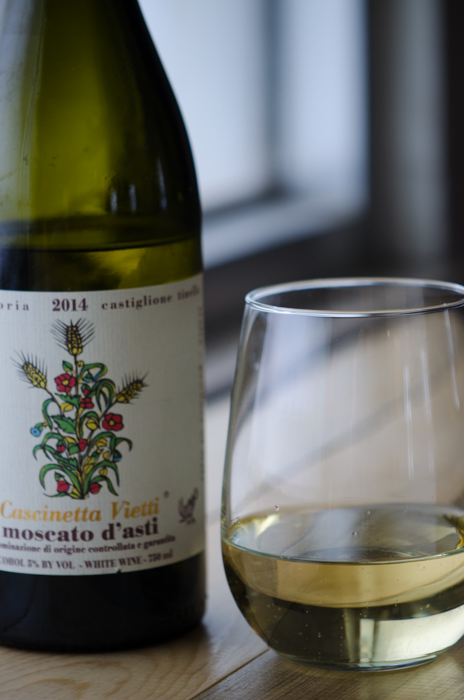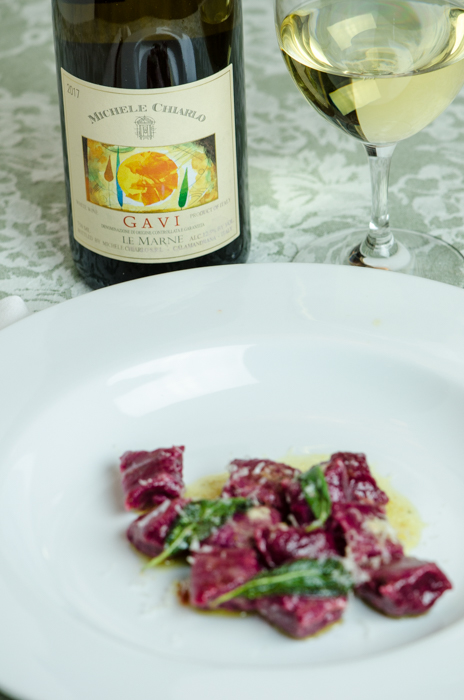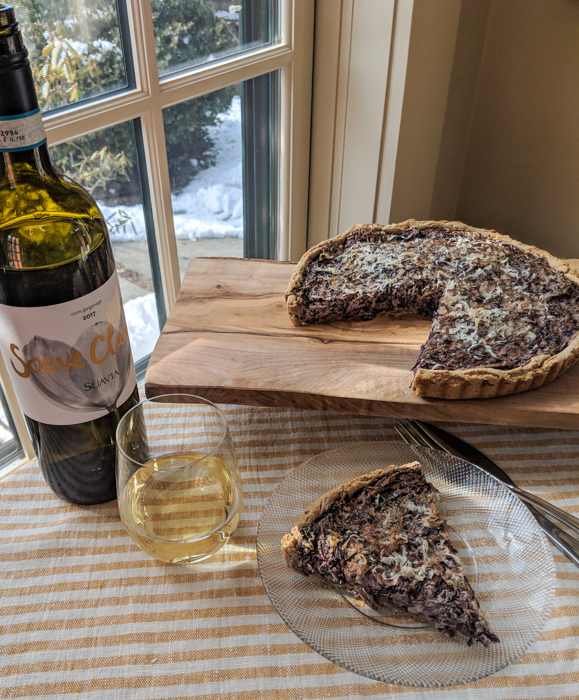
Surrounded by majestic medieval walls, some of the best preserved in all of Italy, the town of Castelfranco Veneto is a destination we visit often on our Italiaoutdoors private walking and cycling tours in Italy. This lovely small town is situated between Treviso and Vicenza, and its defensive walls remind visitors of the battles between the powerful towns of Padua, Vicenza and Treviso in the 13th and 14th centuries.
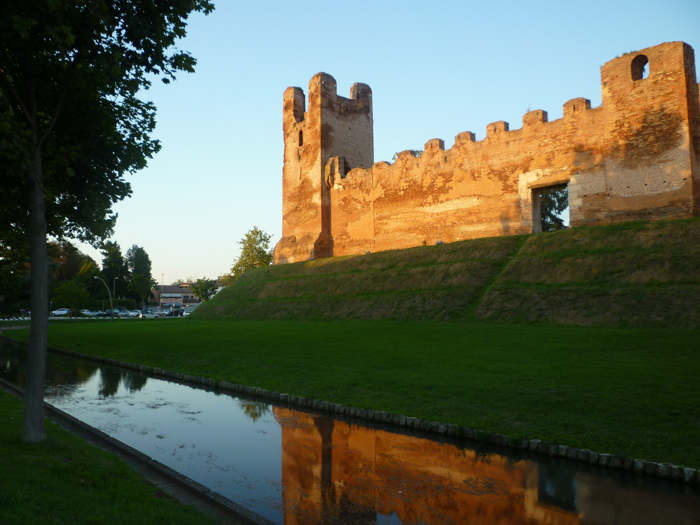
The town has a small historic center, a delightful place to wander for an afternoon. The central piazza is dominated by the Duomo, designed in the eighteenth century by Francesco Maria Preti who also designed Villa Pisani at Strà, another stop on our tours. The church houses the town’s main attraction: an altarpiece by Giorgione, who was born here in Castelfranco. His works are few but very important, including the famous Tempest in the Accademia Gallery in Venice. The altarpiece, which is located in a side chapel on the right, is one of his finest works, the Madonna with St. Francis and Liberalis, more commonly called Pala del Giorgione. In the background, the towers of the old town may be seen.
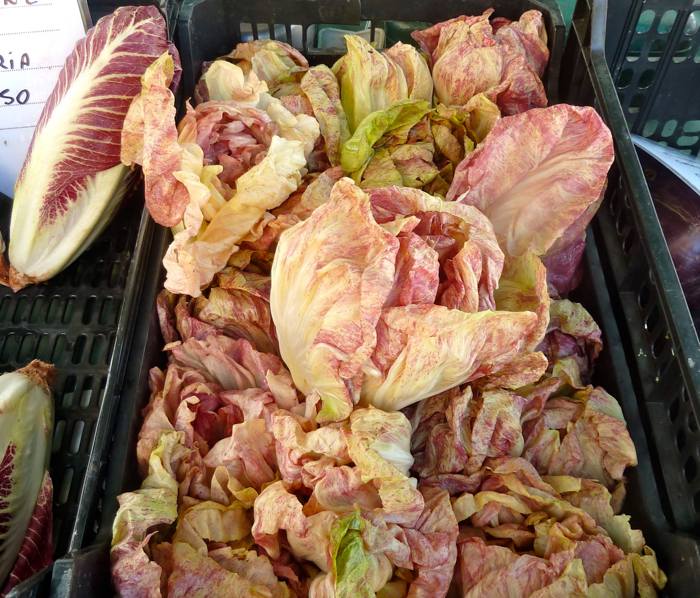
For a town of such a small size, we have many options for wonderful meals. This area around Treviso is known for radicchio – on my first visits years ago I was amazed by the number of varieties and the range of flavors. Castelfranco boasts its own unique variety, the heirloom IGP Radicchio Variegato di Castelfranco. This radicchio has a distinctive appearance, creamy white and variegated, with an open rose-like shape. It has a tender, softer flavor and some claim that is it actually a hybrid of radicchio and belgian endive.
Radicchio is a member of the chicory family, and was first introduced to the Republic of Venice from Asia around 1400. It was cultivated extensively in the region, primarily as animal fodder, and the roots were dried and mashed and used as a substitute for coffee. It was also included as an ornamental plant in the botanical gardens of the Venetian aristocracy. It wasn’t until the 19th century that radicchio was introduced into the local cuisine. It does make an occasional appearance in its raw form, but the preferred method of use is as an ingredient in pasta fillings, rice dishes, or sauteed and served as a side dish to braised meats.
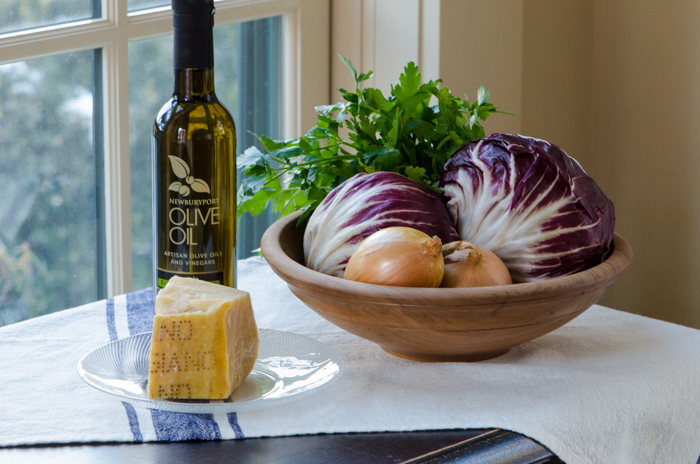
Here in the US, we see predominately the Radicchio Rosso di Chioggia form, which was first grown in the town of Chioggia on the Venetian Lagoon. This type is ball-shaped, like a small cabbage, and mostly purple in color with larger white streaks, or veins.
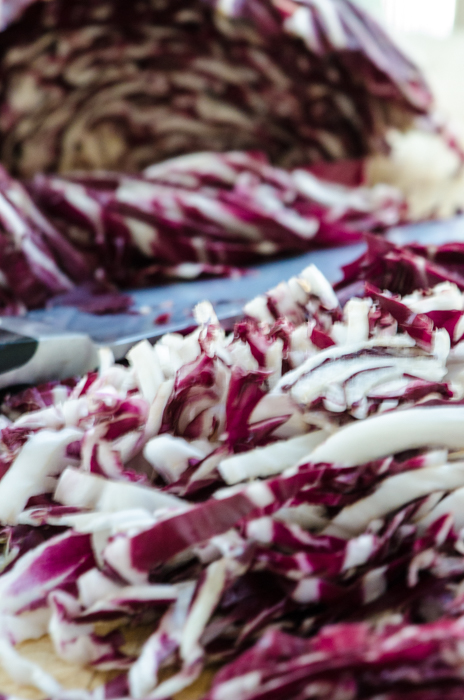
There are two varieties of Radicchio Rosso di Treviso which are grown in and around Treviso, and both are protected by their own IGP quality designation. The Precoce variety appears first in the season, and has deep red leaves with an elongated shape. It has the sweetest and most delicate flavor in the radicchio family. The second type, Tardivo, is more elongated, with a more pronounced vein. As with most radicchios, both undergo a forcing, or ‘whitening”, imbianchimento, in which field-harvested plants have their upper halves cut off, and then are replanted in running water. After a few days, the deep red inner ‘heart’ begins to grow, which is sweet and tender, with a touch of the original bitterness still remaining. The older outer leaves are removed and the heart is what you will see in the market.
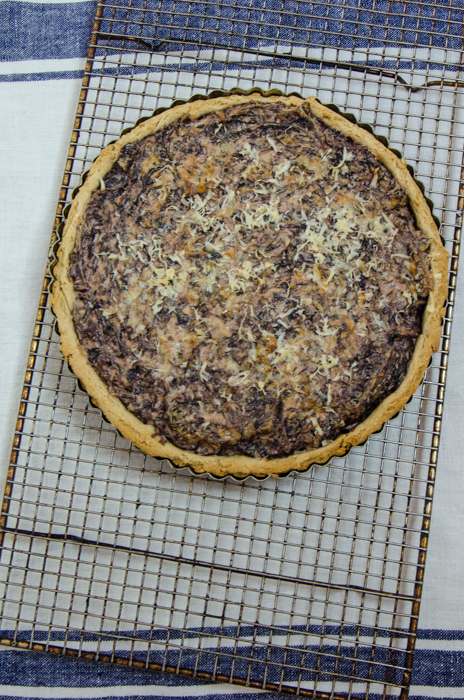
The following recipe is a savory tart with a filling of radicchio and ricotta. This recipe is adapted from Osteria Pironetomosco in Treville di Castelfranco Veneto. The original recipe included farro flour as the second flour; I used chestnut as a substitute. Buckwheat flour work work as well. Enjoy with one of the Veneto’s best white wines, a crisp Soave.
Thanks to Port Plums in Newburyport for the lovely linens and wooden bowl in the photos, and the great olive oil needed to make this dish delicious!
Torta di Radicchio
Dough
1 cup plus 2 tablespoons unbleached all-purpose flour
1/2 cup chestnut flour
1 teaspoons salt
7 tablespoons unsalted butter, cold, cut into smaller pieces
1 large egg
2 egg yolks
1/2 cup grated Grana Padano or Parmigiano-Reggiano cheese
Filling
1 tablespoon extra-virgin olive oil
2 pounds Treviso radicchio, cut into ribbons
1 small yellow onion, minced
Extra-virgin olive oil for sauteing
1 to 2 tablespoons red wine
Salt to taste
9 ounces (1 cup plus 2 tablespoons) ricotta
2 egg yolks
2 tablespoons grated Grana Padano or Parmigiano-Reggiano cheese
1/4 cup heavy cream or whipping cream
Preheat the oven to 350°F.
To make the dough, place the two types of flour and the salt into a bowl of a food processor. Pulse 3 times to combine. Add the butter pieces and process until the mixture is a course meal. Add the egg, yolks, and grated cheese, pulse until everything is combined and the mixture begins to form a single ball. Remove from bowl, flatten into a disk, wrap in plastic wrap and refrigerate for 30 minutes.
For the filling, place the olive oil in a preheated saute pan. Add the radicchio and onion and saute until soft and the onions are translucent. Add the wine and turn down to a simmer. Braise until the radicchio is soft and the liquid has evaporated, about 15 minutes. Salt to taste.
In a bowl combine the ricotta with the egg yolks, grated cheese and cream. Season with salt to taste. Stir in the cooked radicchio to combine.
Roll out the dough with a rolling pin and place it in a 9” tart pan. Spread the radicchio mixture on top of the dough, level with a spoon, and bake in the preheated oven until the crust is golden, about 30 minutes.
From Osteria – 1,000 Generous and Simple Recipes from Italy’s Best Local Restaurants by Slow Food Editore.
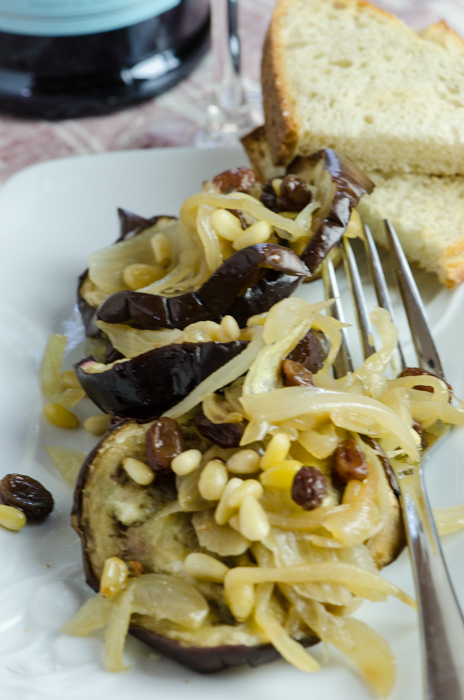
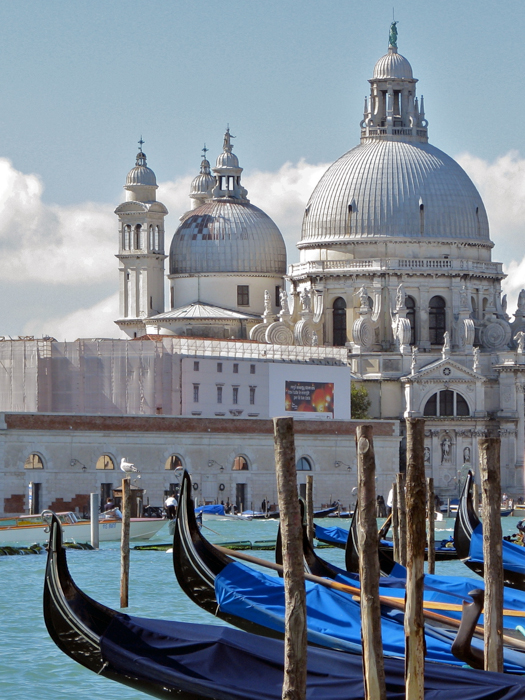
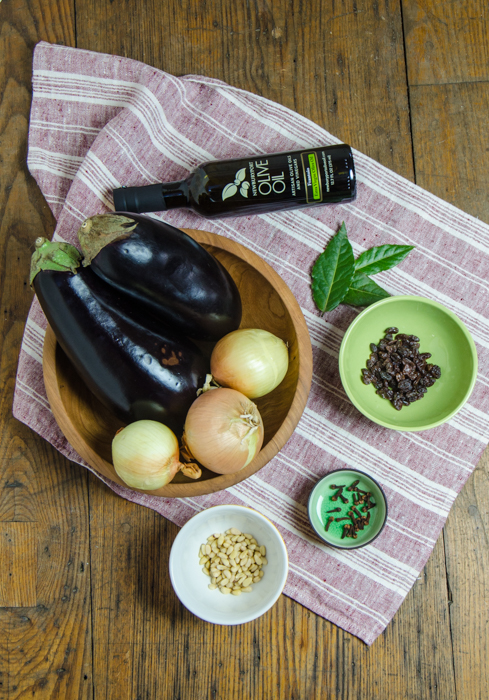
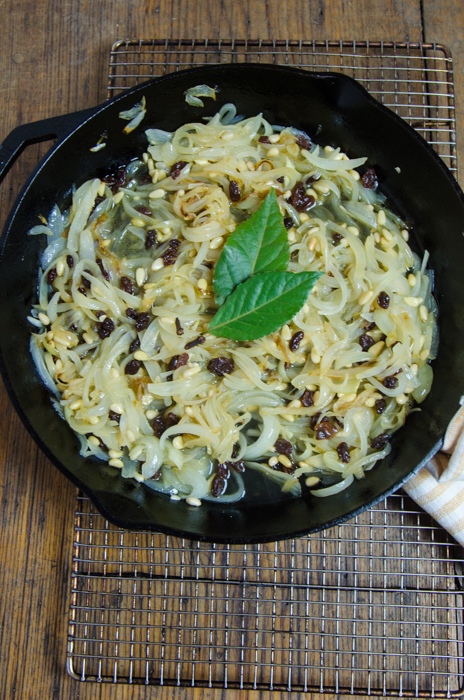
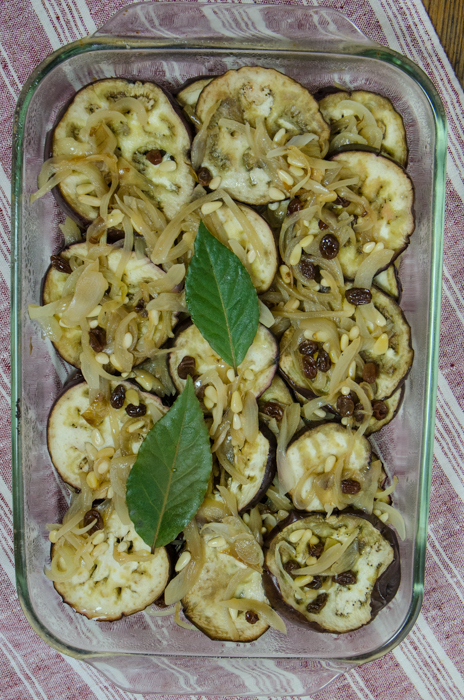
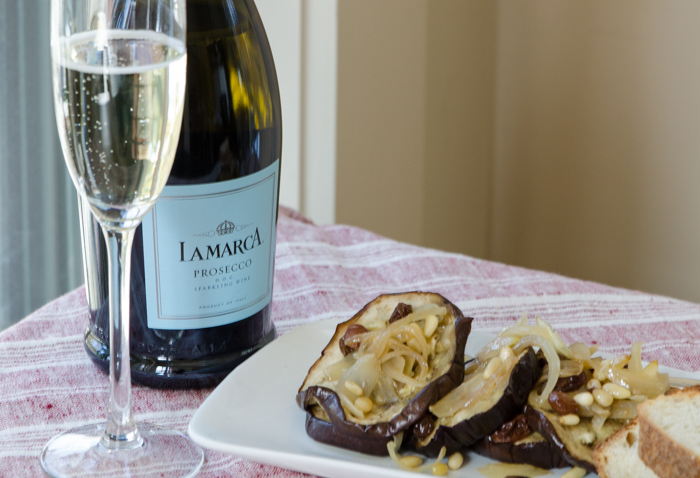
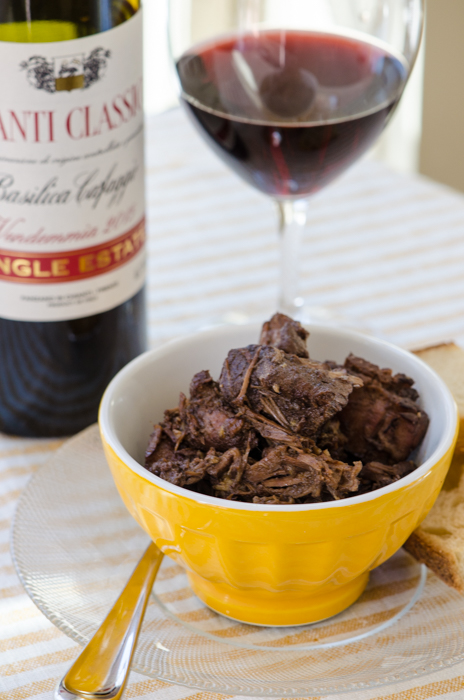

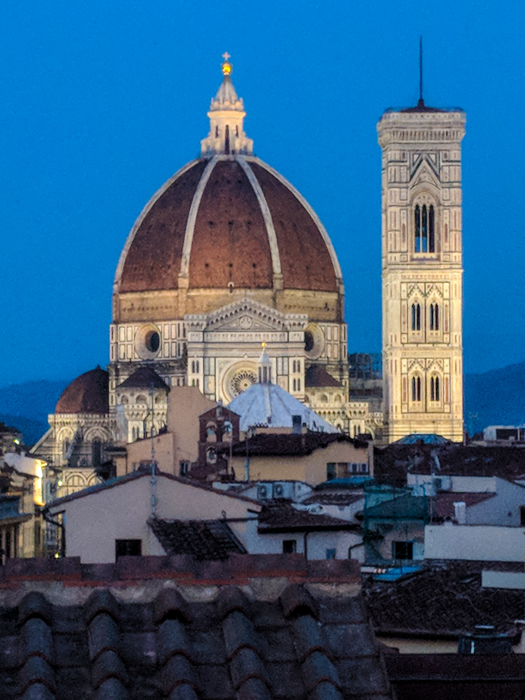
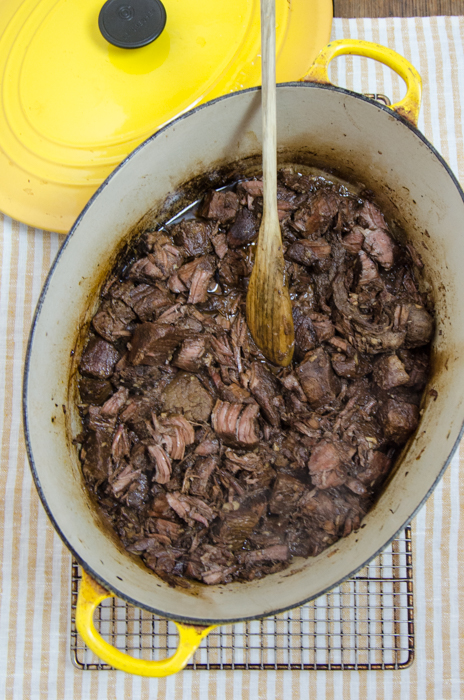
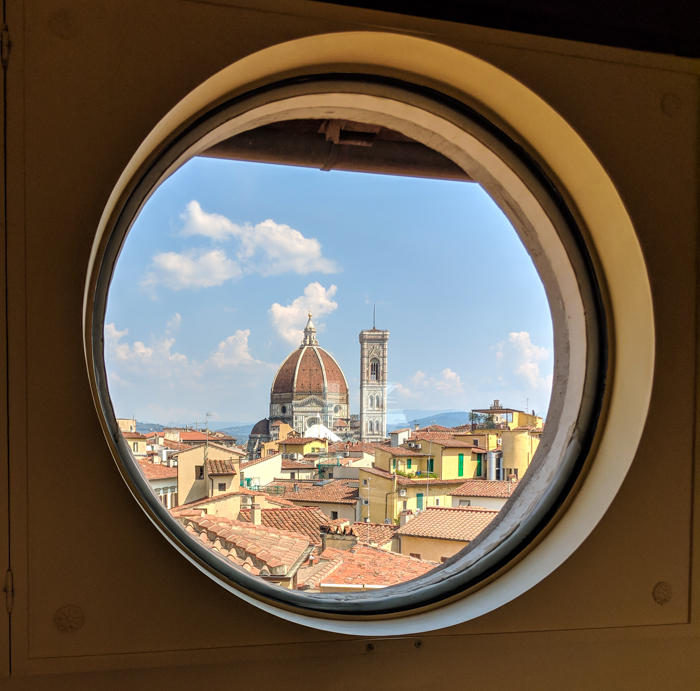
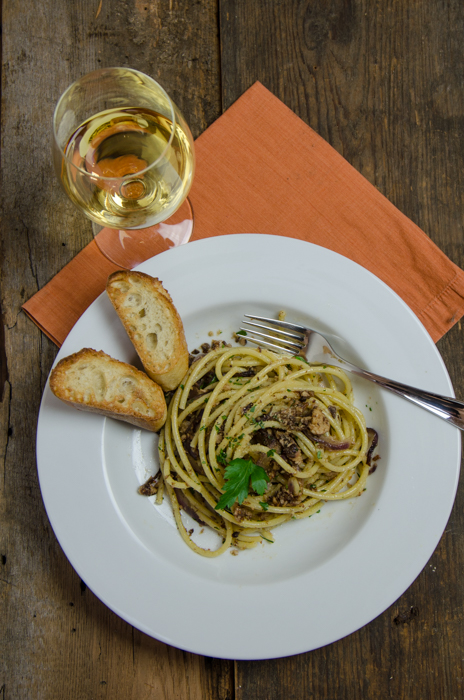 This classic Venetian dish you can whip up out of your pantry, making the sauce while the pasta cooks. I’ve enjoyed this across the Veneto region, from an osteria along the Grand Canal in Venice to a lakeside trattoria on Lake Garda, as sardines are found in both saltwater and fresh. Sardines play an important part in the local markets in Italy because of its low price and its ease of preserving. Salted sardines are perfect for this dish, but hard to find here in the US, however sardines packed in oil work just fine.
This classic Venetian dish you can whip up out of your pantry, making the sauce while the pasta cooks. I’ve enjoyed this across the Veneto region, from an osteria along the Grand Canal in Venice to a lakeside trattoria on Lake Garda, as sardines are found in both saltwater and fresh. Sardines play an important part in the local markets in Italy because of its low price and its ease of preserving. Salted sardines are perfect for this dish, but hard to find here in the US, however sardines packed in oil work just fine.